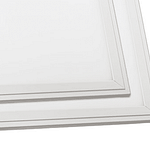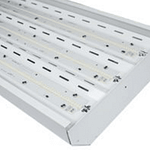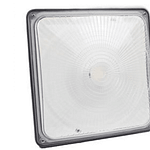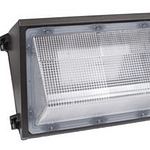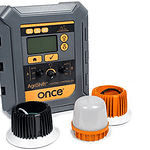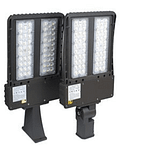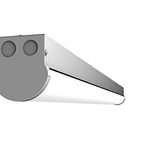The success of LED lights is rapidly growing due to LEDs ability to replace practically any fluorescent or incandescent bulb while remaining cost-effective and environmentally friendly. LED lights have even been created specifically for livestock and plants. Now the focus of LED lights has shifted from agriculture lighting to human centric lighting (HCL), the next big wave on the LED market.
What is HCL? HCL has been shown to improve a person’s long term focus and visual acuity, as well as circadian rhythms, sleep, mood, perception, and performance and productivity. HCL lighting is designed to dim and brighten according to specific times during the day and even particular environments such as schools, hospitals and office buildings.
Why the Need for Human Centric Lighting?
You may be wondering why the need for such advanced lighting. Today, 90 percent of people spend the majority of their time indoors, whether they are working, going to school or at home. This means quality indoor lighting is imperative to your health. Without properly adjusted lighting, your body’s circadian rhythm is disrupted and could affect your overall health.
Circadian Rhythms and HCL
Through years of evolution, our bodies have acclimated to the 24 hour cycle of each day. This means our bodies have developed a circadian clock of sorts that our bodies abide by. This clock determines mental, behavioral and physical changes during the course of 24 hours. Circadian rhythms are created by natural factors within our bodies, as well as signals from our environment. This is where human centric lighting comes into play.
The greatest environmental factor that affects our circadian rhythm is light. That is why we feel drowsy on cloudy, rainy days and why people suffer from Seasonal Affective Disorder (SAD) when sunlight is scarce in the winter. Without proper lighting that can be tuned and adjusted to your natural circadian rhythms, your body is at greater risk for illness. Abnormal circadian rhythms have been associated with sleep disorders, insomnia, obesity, diabetes, depression, and bipolar disorder.
Through new LED developments, HCL is on the rise. While sitting under a constant stream of undynamic light disrupts our internal rhythms, exposure to dynamic HCL will help readjust your natural circadian rhythms and improve your mental, physical and emotional health.
The Benefits of LED Human Centric Lighting
Up to this point, fluorescent lighting has been used in HCL studies, but LEDs are proving to be the new driving force. LEDs offer varied intensity and color temperatures that can be controlled via sensors or remotes. Studies have shown that lighting which resembles natural sunlight improves students concentration in classrooms and employee productivity in offices. Using LED lights and dimmers in hospitals has also improved patient sleep quality, and therefore healing time, by slowly dimming lights in a way that mimics the sunset and sunrise. Only LEDs offer such advanced forms of lighting.
This new lighting technique may be just as impactful as the discovery of the lightbulb itself. By simply implementing HCL in office buildings, schools and hospitals, we could drastically improve our health!
Posted in Human Centric Lighting
Tagged HCL, Human Centric Lighting, LED, LED innovations, LED news




